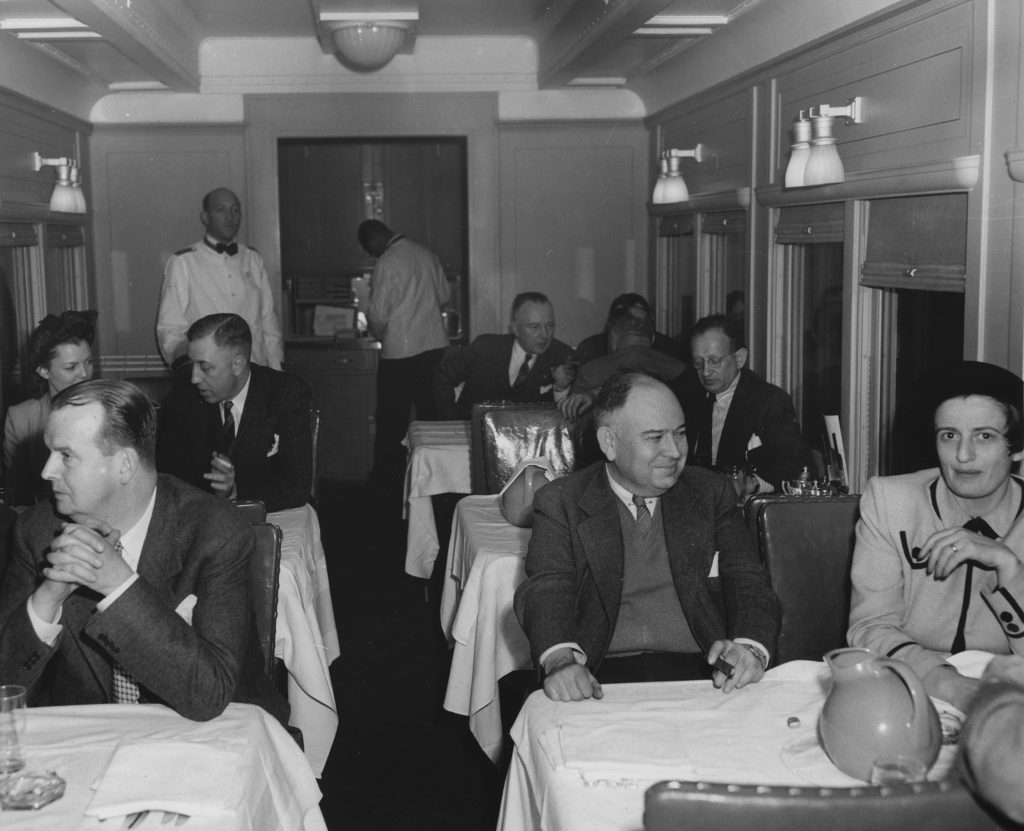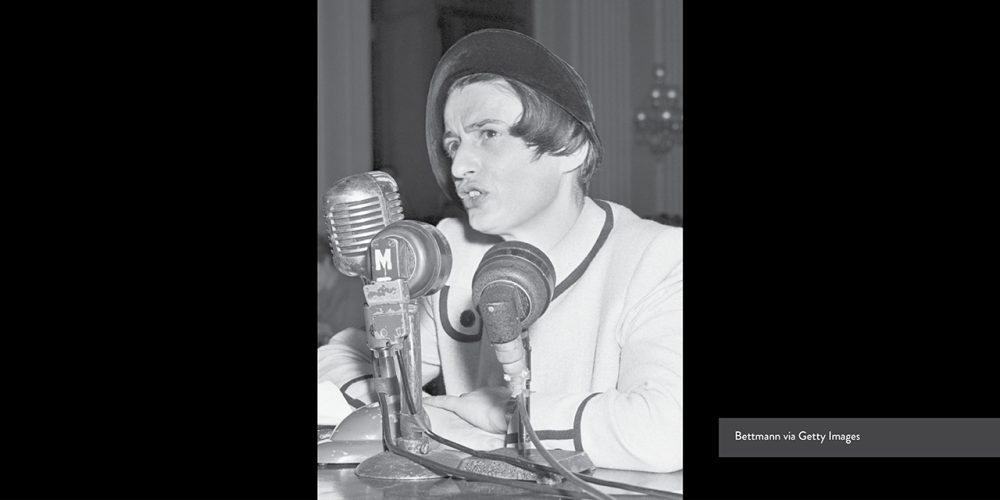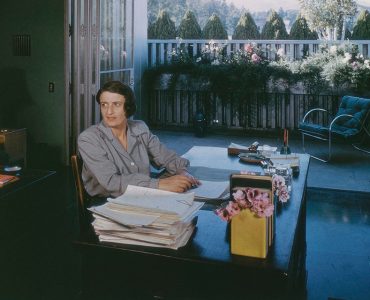This vignette about Rand’s experience with HUAC was first printed in the Spring 2023 issue of Ayn Rand Today. You can receive this publication by becoming an ARI member. Material in this piece was drawn from the 2022 exhibit “Ayn Rand Goes to Washington.” Many thanks to Robert Mayhew for his book Ayn Rand and “Song of Russia,” which provided source material for this article, and is recommended for anyone interested in the full story of Rand’s HUAC testimony.
October 20, 1947, was a warm day in Washington, D.C., with temperatures near 80° Fahrenheit. The heat outside presaged the heated discussions happening at the U.S. Capitol, where the House Committee on Un-American Activities (HUAC) opened its first day of hearings “regarding the Communist infiltration of the motion picture industry.”
Ayn Rand, dressed in a light suit with dark trim and wearing a dark hat, had come to the capital by train from New York. She was called to the HUAC hearings as a “friendly witness,” meaning that she was expected to testify that there was a communist influence on Hollywood and give information about those involved. Rand hoped to do more than that.
Rand knew that the Committee was “a very dubious kind of undertaking,” because it combined investigation of factual issues such as Communist Party membership with investigation of ideological issues which was “improper for a government agency.” She decided that it was important to testify anyway because, at that time, the hearings were the only forum where she could bring “out into the open” the issue of communist “propaganda on the screen.” She agreed to testify hoping that non-governmental forums of ideological discussion would subsequently open, and on the condition that she be allowed to “present a full case.”
Late on that first day, she was the last witness called. After being sworn in and answering some introductory questions, Rand got right to her point: “First of all I would like to define what we mean by propaganda.” Communist propaganda, she identified, was “anything which gives a good impression of communism as a way of life. Anything that sells people the idea that life in Russia is good and that people are free and happy . . .” Having defined her terms, she undertook the Committee’s request to summarize the MGM film Song of Russia (1943), and indicated how it “sold” the idea that the Russian people were not enslaved by the Soviet regime. This was a lie and a moral betrayal of those enslaved people, and Rand emphasized to the Committee that “nothing on earth will justify slavery. In war or peace or at any time you cannot justify slavery.”

At the HUAC hearing, one of Ayn Rand’s first major appearances as a public intellectual, she raised vital fundamental philosophical points about truth and propaganda. Based on her notes about communist propaganda in several movies, and later comments in her biographical interviews, she planned to give broad, principled testimony about the very real and pernicious communist influence in Hollywood during the 1930s and 1940s. Unfortunately, the Committee didn’t give her the opportunity, asking only about the single MGM film, which Rand analyzed based on her philosophical principles and firsthand knowledge of the Soviet Union.
But Rand later presented to the film industry points she didn’t have time to make during her HUAC testimony. In a pamphlet titled “Screen Guide for Americans,” she opened with the reasons the propaganda issue was important, writing, “Political ideas do not come out of thin air. They are the result of the moral premises which men have accepted.” Communists in Hollywood were not trying to make “political movies openly advocating Communism,” as many less philosophically sophisticated opponents of Communism thought, but rather, “[t]heir purpose is to corrupt our moral premises by corrupting non-political movies.” Rand identified the kinds of moral premises that the communists wanted to portray, such as presenting independent men, free enterprise, and wealth as things to be smeared and disparaged. She concluded by emphasizing the importance of taking ideas seriously, and encouraged the film industry to “put an end to [the communists’] use of our pictures, our studios and our money for the purpose of preaching our expropriation, enslavement and destruction.”
Rand’s HUAC testimony and her “Screen Guide” were examples of her seeking to influence the culture early in her career as a writer and public intellectual. Recognizing the role of philosophy in shaping society, she was uncompromising in advocating her rational ideals.






